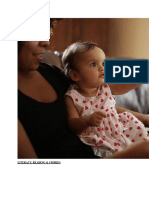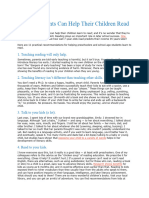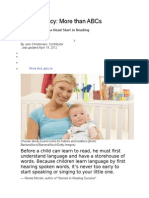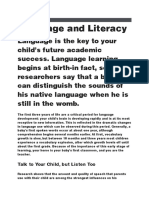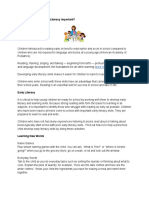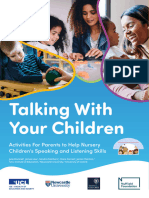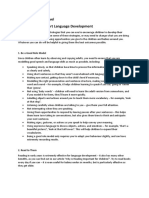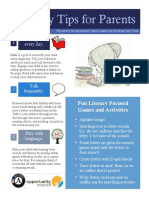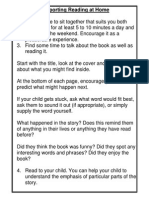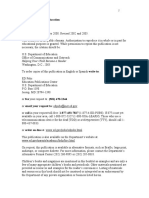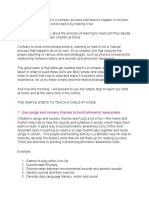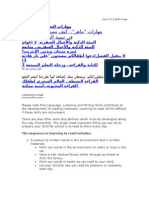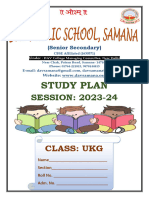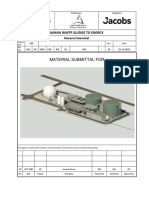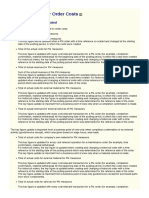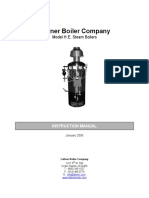0% found this document useful (0 votes)
49 views32 pagesIntroduction To Literacy Development
Literacy encompasses reading, writing, listening, speaking, and creating texts, forming a foundation for effective communication and various life skills. Early literacy development in children involves building blocks such as speaking, listening, and understanding, which can be fostered through activities like talking, reading, and playing with sounds. Engaging children in these practices not only enhances their literacy skills but also strengthens their cognitive connections and emotional understanding.
Uploaded by
Maj MyrielleCopyright
© © All Rights Reserved
We take content rights seriously. If you suspect this is your content, claim it here.
Available Formats
Download as PDF, TXT or read online on Scribd
0% found this document useful (0 votes)
49 views32 pagesIntroduction To Literacy Development
Literacy encompasses reading, writing, listening, speaking, and creating texts, forming a foundation for effective communication and various life skills. Early literacy development in children involves building blocks such as speaking, listening, and understanding, which can be fostered through activities like talking, reading, and playing with sounds. Engaging children in these practices not only enhances their literacy skills but also strengthens their cognitive connections and emotional understanding.
Uploaded by
Maj MyrielleCopyright
© © All Rights Reserved
We take content rights seriously. If you suspect this is your content, claim it here.
Available Formats
Download as PDF, TXT or read online on Scribd
/ 32
